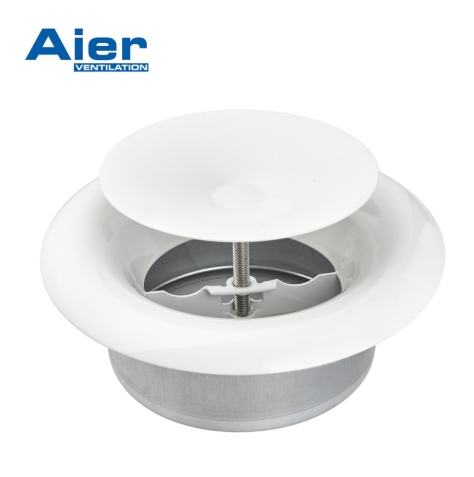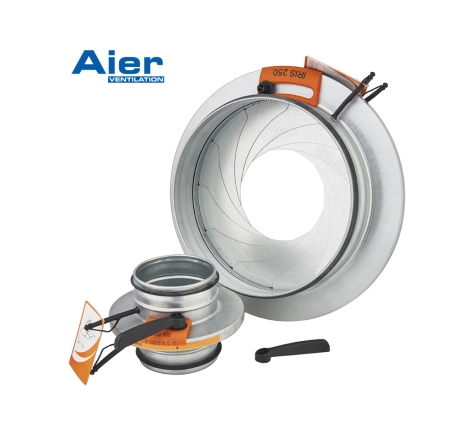In modern HVAC and industrial ventilation systems, achieving optimal indoor air quality hinges on precise supply and exhaust airflow control. Our ventilation supply & exhaust air valve is designed to balance these flows efficiently, creating a stable and healthy atmosphere.
Indoor environments—especially confined spaces like laboratories, factories, or large commercial buildings—require consistent negative or positive pressure for safety and comfort. As air is continuously exchanged to dilute pollutants and maintain cleanliness, the valve must regulate airflow accurately while minimizing energy consumption. That is where manual variable airflow valves play a crucial role—no electricity or complex actuators, just reliable handle adjustment.

1) Pressure-independent control: Utilizing simple yet effective disc elements, these manually adjusted valves maintain stable airflow even when duct pressure changes slightly. Ideal for small lab or exhaust branches.
2) Because there’s no power, our valves won’t fail if the system loses electricity—great for workshops or remote settings.
3) Energy-efficient operation: By allowing fine manual tuning of minimum standby flow or full open during peak hours, users avoid wasteful exhaust, supporting sustainability.
4) Users can easily dial in the exact opening they need—no over-venting when demand is low.
5) Robust simplicity: Made from galvanized steel or stainless, and featuring a manual handle, these valves are built strong.
6) Fewer parts mean fewer breakdowns—no actuators, no wiring, just a durable valve that lasts years.

1) Easy to set:Open or close by hand until you feel the airflow—no tools or power required.
2) No routine maintenance :Unlike actuated valves, manual ones only need occasional dusting.
3) Quick troubleshooting :If airflow seems off, operators can instantly check valve position—no control system needed.
These valves are crafted from robust materials,galvanized steel, stainless steel, or reinforced plastics,ensuring suitability across applications, from corrosive chemical labs to commercial spaces.
If you're optimizing airflow management, reducing HVAC energy consumption, or ensuring safe containment in critical environments—without adding electrical complexity—our manual ventilation supply & exhaust air valves offer the simplicity, reliability, and efficiency you need.
Efficient airflow management relies not only on valves but also on sophisticated dampers. Our ventilation iris damper provides a compact, high-precision solution for regulating air volume in HVAC ducts and cleanroom environments.
Unlike traditional butterfly dampers that rotate opaque blades, iris dampers adjust via overlapping petals that form an adjustable and concentric opening. This design ensures smooth, linear control across the full range, with minimal turbulence or leakage.

1)Fine-grained airflow control: The iris mechanism enables incremental adjustments, maintaining consistent airflow rates—essential in lab exhaust or cleanroom ventilation.
2)Minimal pressure drop: When partially closed, the damper’s streamlined path keeps pressure losses low, complementing constant and variable volume systems that require pressure stability.
3)Fast, synchronized operation: Electric or pneumatic actuators drive multiple petals simultaneously, rapidly changing airflow—ideal for dynamic environments like labs with fume hoods .
4)Modular and space-efficient: Compact bodies fit easily into ductwork and cleanroom ceilings without bulky external linkages, simplifying installation and saving space compared to long-stroke butterfly dampers .
5)Constructed from galvanized steel, stainless steel, for corrosive environments, these dampers withstand heavy-duty use.

1)Individual terminal control in VAV systems
2)Flow balancing among multiple duct branches
3)Cleanroom pressure and airflow regulation
4)Exhaust flow control in fume hoods and contamination-sensitive areas
In short, the ventilation iris damper stands out as a versatile, reliable, and cost-effective precision airflow tool—perfect for sophisticated HVAC needs requiring stability, performance, and compact design.